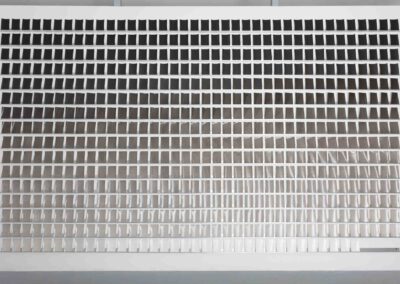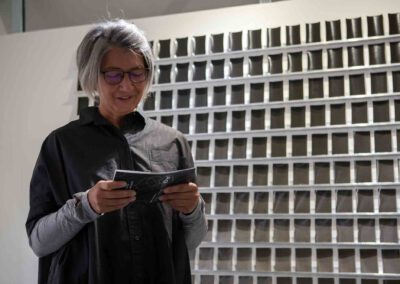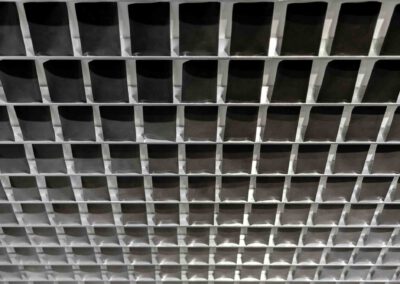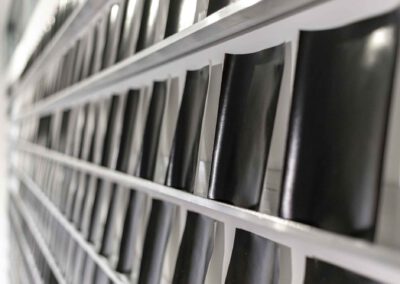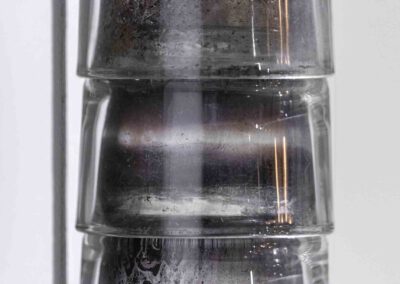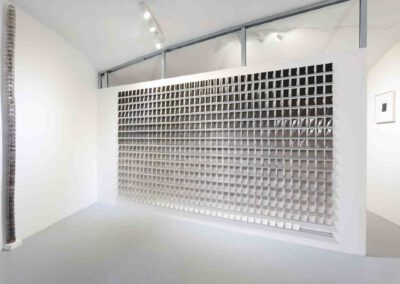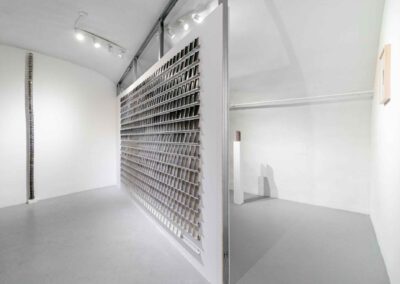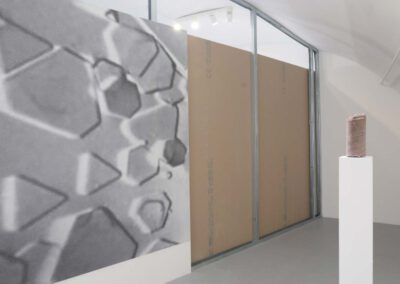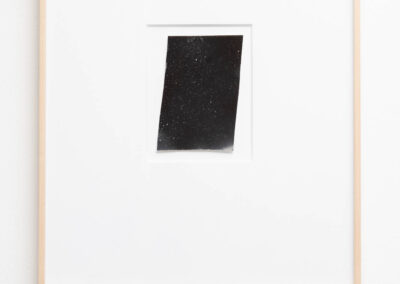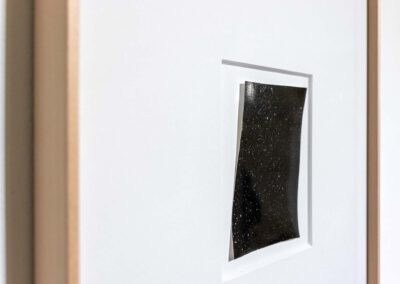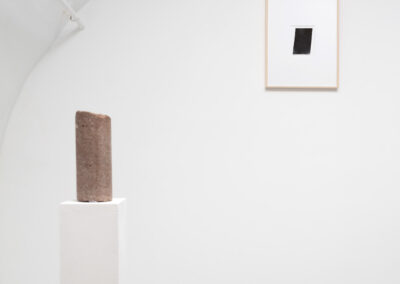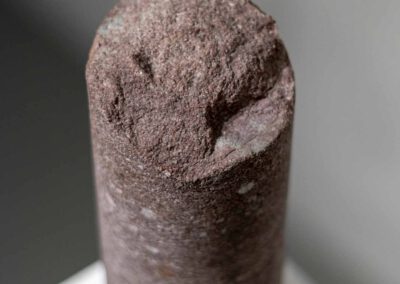Aggregation / Dobokay Máté
2021. 08. 28. – 09. 11.
Aggregation
Dobokay Máté egyéni kiállítása
Dobokay Máté egyéni kiállítása
Megnyitó: 2021. 08. 28., 17:00
A kiállítást megnyitja: Eperjesi Ágnes, képzőművész
Kurátor: Horváth Lili
Grafika: Mitter Viola
Grafika: Mitter Viola
Dobokay Máté alkotói gyakorlatától nem idegen a nyílt parafrázis alkalmazása és a 2013-as Simon Hantaï-nak dedikált munkái után a jelen kiállításra készített új sorozatával immár másodjára nyúl szuverén módon és határozott kézzel a magyar és nemzetközi kortárs képzőművészeti színtér egy megkerülhetetlen szereplőjének életművéhez. A Maurer Dóra Nyomtatás kimerülésig (1978-1979) munkájának parafrázisa köré szerveződő, helyspecifikus műegyüttese lírai érzékiségével és a process arttal rokonítható jellegével azonban egyértelműen kiemelkedik az alkotó eddigi munkásságából. A mediális önreflexió központi szerepén és a fotográfiát a sokszorosított grafikához fűző, hasonló képelméleti problémákon túl fontosabb a kapcsolat a két képzőművész közt munkamódszerüket is alapvetően meghatározó alkotói attitűdjükben: az alkalmazott képalkotási eljárásaikhoz szükséges komoly szaktudás birtokában, a tudatosság és racionális önkontroll gyakorlása mellett a véletlen, az ösztönösség és a kísérletező kedvű játékosság ambivalens párhuzamossága, mely egyszerre hűvös és intim, tudományos és szubjektív munkákban ölt testet.
Maurer hidegtűnyomat-sorozatának analógiájára – amely a használatban lévő nyomólemezen látható formák kimerülésének, elkopásának folyamatát, a rajz átalakulását rögzíti – Dobokay a friss hívófolyadék fokozatos romlását dokumentálva egységesen beexponált, előhívott fotópapírokat sorakoztat fel egészen addig a stádiumig, amíg a vegyszer már nem hat a fotoszenzitív anyagra. Ahogyan a fotográfia belső szerkezetének, legelemibb alkotórészeinek analitikus vizsgálata, úgy a szerialitás sem idegen Dobokay alkotói metódusától. A kiállításra készült új anyaga a több mint 600 képet számláló gradienssel azonban nem csupán léptékében tér el látványosan korábbi munkáitól, de egyúttal a repetitivitás, a halmozás gesztusa mögött álló, a korábbi munkáihoz viszonyítva megváltozott alkotói szemléletről is tanúskodik: egy esetleges esztétikai szempontú szelekciót felülírva ezúttal az ábrázolás hitelessége követeli meg a folyamat összefüggő fázisainak teljeskörű bemutatását. A sorozat elemei ily módon materializálják a fotográfiai képalkotás anyagtalan komponensét, az időt, reflektálva egyúttal az alkotói processzus sajátos időtapasztalatára és a megismételhetetlen ismétlődés dilemmájára. A sötétebből a világosba, a nehézből a könnyű minőségébe átforduló felületek szimbolikája, a fokozatos kimerülés, az anyagiból a szellemibe való átlényegülés legalább annyira fontos olvasatát adják a látszólag numerikus-mechanikus karakterű műnek, mint a technikai eljárás képi motívum rangjára emelt jellegzetes tulajdonsága.
Maga a „megörökítő anyag”, a fotópapír fényérzékeny rétegében előhíváskor keletkező és a fixírben kiváló ezüst, többféleképpen is formát ölt a galéria terében. Kicsapódott állapotban látható az oszlopként egymásra sorakoztatott poharak falán vagy épp a hiánya válik már-már tapinthatóvá a meglazult és részeiben levált emulzió helyén egy beexponált és feketére előhívott fotópapírdarabon, – amely a gyanútlan szemlélő számára leginkább a nyári csillagos égboltról készült apró fényképnek tűnhet –; de geometrikus absztrakt festményt idéző szemcseszerkezetét is megvizsgálhatjuk egy többezerszeres nagyítású mikroszkópfelvételen. Destrukció és konstrukció egyidejű jelenléte mellett a kiállításon így hangsúlyossá válik a különböző léptékek, mikro és makro szintek közti feszültség is, mely egyúttal tovább tágítja a kiállítás szemiotikai mezőjét a címadó angol kifejezés akkumuláció; felhalmozódás; ki- és lecsapódás jelentésein túli, kozmikus tartományok felé. A galaxist fürkésző tekintet és a molekulák mikroszkopikus vizsgálata közt egy, az alkotó által kisajátított objekt, a Mecsek hegységből származó talajfurat teremt érzéki kapcsolatot, amely szemcsézettségében megidézheti az ezüst kristályszerkezetét is, de ráirányíthatja figyelmünket akár egy mikro- és makroszinteken átívelő, kevéssé ismert összefüggésre is: amíg – a középkori alkímiában az ezüst asztronómiai megfelelőjeként számon tartott – Hold felszínét az emberiség az elmúlt ötven évben messzemenően felderítette, addig elenyészően kevés kutatás vizsgálta közvetlenül a talpunk alatt, a talajban zajló életet, így az továbbra is gyakorlatilag ismeretlen territórium maradt számunkra, miközben akár egy maréknyi földben több élőlény található, mint amennyi ember a Földet benépesíti. (Horváth Lili)
Maurer hidegtűnyomat-sorozatának analógiájára – amely a használatban lévő nyomólemezen látható formák kimerülésének, elkopásának folyamatát, a rajz átalakulását rögzíti – Dobokay a friss hívófolyadék fokozatos romlását dokumentálva egységesen beexponált, előhívott fotópapírokat sorakoztat fel egészen addig a stádiumig, amíg a vegyszer már nem hat a fotoszenzitív anyagra. Ahogyan a fotográfia belső szerkezetének, legelemibb alkotórészeinek analitikus vizsgálata, úgy a szerialitás sem idegen Dobokay alkotói metódusától. A kiállításra készült új anyaga a több mint 600 képet számláló gradienssel azonban nem csupán léptékében tér el látványosan korábbi munkáitól, de egyúttal a repetitivitás, a halmozás gesztusa mögött álló, a korábbi munkáihoz viszonyítva megváltozott alkotói szemléletről is tanúskodik: egy esetleges esztétikai szempontú szelekciót felülírva ezúttal az ábrázolás hitelessége követeli meg a folyamat összefüggő fázisainak teljeskörű bemutatását. A sorozat elemei ily módon materializálják a fotográfiai képalkotás anyagtalan komponensét, az időt, reflektálva egyúttal az alkotói processzus sajátos időtapasztalatára és a megismételhetetlen ismétlődés dilemmájára. A sötétebből a világosba, a nehézből a könnyű minőségébe átforduló felületek szimbolikája, a fokozatos kimerülés, az anyagiból a szellemibe való átlényegülés legalább annyira fontos olvasatát adják a látszólag numerikus-mechanikus karakterű műnek, mint a technikai eljárás képi motívum rangjára emelt jellegzetes tulajdonsága.
Maga a „megörökítő anyag”, a fotópapír fényérzékeny rétegében előhíváskor keletkező és a fixírben kiváló ezüst, többféleképpen is formát ölt a galéria terében. Kicsapódott állapotban látható az oszlopként egymásra sorakoztatott poharak falán vagy épp a hiánya válik már-már tapinthatóvá a meglazult és részeiben levált emulzió helyén egy beexponált és feketére előhívott fotópapírdarabon, – amely a gyanútlan szemlélő számára leginkább a nyári csillagos égboltról készült apró fényképnek tűnhet –; de geometrikus absztrakt festményt idéző szemcseszerkezetét is megvizsgálhatjuk egy többezerszeres nagyítású mikroszkópfelvételen. Destrukció és konstrukció egyidejű jelenléte mellett a kiállításon így hangsúlyossá válik a különböző léptékek, mikro és makro szintek közti feszültség is, mely egyúttal tovább tágítja a kiállítás szemiotikai mezőjét a címadó angol kifejezés akkumuláció; felhalmozódás; ki- és lecsapódás jelentésein túli, kozmikus tartományok felé. A galaxist fürkésző tekintet és a molekulák mikroszkopikus vizsgálata közt egy, az alkotó által kisajátított objekt, a Mecsek hegységből származó talajfurat teremt érzéki kapcsolatot, amely szemcsézettségében megidézheti az ezüst kristályszerkezetét is, de ráirányíthatja figyelmünket akár egy mikro- és makroszinteken átívelő, kevéssé ismert összefüggésre is: amíg – a középkori alkímiában az ezüst asztronómiai megfelelőjeként számon tartott – Hold felszínét az emberiség az elmúlt ötven évben messzemenően felderítette, addig elenyészően kevés kutatás vizsgálta közvetlenül a talpunk alatt, a talajban zajló életet, így az továbbra is gyakorlatilag ismeretlen territórium maradt számunkra, miközben akár egy maréknyi földben több élőlény található, mint amennyi ember a Földet benépesíti. (Horváth Lili)
EN
Aggregation
a solo exhibition by Máté Dobokay
a solo exhibition by Máté Dobokay
Opening: 28. 08. 2021, 5pm
Opening remarks by: Ágnes Eperjesi, visual artist
Opening remarks by: Ágnes Eperjesi, visual artist
Curated by: Lili Horváth
Graphic design: Viola Mitter
Translation: Róna Kopeczky
Translation: Róna Kopeczky
The use of direct paraphrases is not unknown to Máté Dobokay’s artistic practice; following his works dedicated to Simon Hantai in 2013, the artist now reinterprets for the second time the oeuvre of a determining figure of the Hungarian and international contemporary art scene in the series realized for this exhibition, in a sovereign way and with a steady hand. However, the site-specific ensemble of works that paraphrases Dóra Maurer’s piece Printing till the Exhaustion of Drypoint (1978-1979) stands out from the artist’s practice with its lyrical sensuality and its affinity with process art. Beyond the central role played by mediatic self-reflexion and the visual theoretical problems linking photography to printmaking, the relation between the methodology that fundamentally defines the two artists’ practices, becomes more important. That is to say the ambivalent parallelism between the serious expertise required by the processes of applied image-making, the exercising of mindfulness and rational self-control on one side and random chance, instinctiveness and experimental playfulness on the other, taking form in works that are both distant and intimate, scientific and subjective.
By analogy with Maurer’s drypoint series – which visualises the process of exhaustion and abrasion of forms on a printing plate in use, and the transformation of the motif – Dobokay documents the progressive deterioration of the liquid developer on uniformly exposed and developed photo papers lined up to the point where the chemical does not react to the photosensitive material anymore.
Neither is the analytical examination of photography’s internal structure and most fundamental components unknown to Dobokay’s artistic practice, nor is seriality. With its gradient counting more than 600 photographs, not only do the works newly made for this exhibition differ spectacularly in scale from his previous pieces, their repetition and the gesture of accumulation also reveal a shift in his creative approach. Overriding a possibly aesthetical selection, the authenticity of representation demands this time the complete presentation of the contiguous phases composing the process. The element of the series thus materialises the immaterial component of photographical image-making, time, while reflecting on the specific time experience of the creative process, as well as on the dilemma of the unrepeatable repetition. The symbolism of surfaces turning from dark and heavy qualities into light ones, the gradual exhaustion, as well as the transubstantiation of the material into the intellectual allow an at least as important interpretation of the apparently numerical-mechanical natured piece as the characteristic property of a technical procedure raised to the level of visual motif.
The ”recording material”, i.e. the silver that forms first in the light sensitive layer of the photo paper then in the fixer, materialises in different ways in the gallery space. Appearing in a precipitated form on glasses piled up into a column, or being almost tangibly absent from the emulsion getting loose and partly peeling off an exposed and developed, totally black photo paper – that the unsuspecting viewer might interpret as a tiny photo of the starry summer sky –, its grain structure evoking a geometric abstract painting also becomes visible thanks to a several thousandfold microscopic enlarging. Parallelly to the simultaneous presence of destruction and construction, the exhibition emphasizes different scales and highlights the tension between micro and macro levels, thus enlarging the semiotic field of the exhibition beyond the meaning of accumulation, precipitation and condensation of the English titular expression, and towards cosmic realms. The sensual connection between gazing at the galaxy and the microscopic examination of molecules is created by an object appropriated by the artist, a ground sample originating from the Mecsek mountain range. The graininess of this sample can evoke the crystal structure or silver, but also direct our attention to a less known correspondence cutting across micro and macro levels; while man has explored thoroughly the surface of the moon – considered to be the astronomic equivalent of silver in medieval alchemy – for the past fifty years, very few researches have been focusing on life beneath our feet, in the ground. It therefore stays, in effect, an unknown territory for us to this day, while there are more creatures living in a handful of soil that humans living on Earth. (Lili Horváth)
By analogy with Maurer’s drypoint series – which visualises the process of exhaustion and abrasion of forms on a printing plate in use, and the transformation of the motif – Dobokay documents the progressive deterioration of the liquid developer on uniformly exposed and developed photo papers lined up to the point where the chemical does not react to the photosensitive material anymore.
Neither is the analytical examination of photography’s internal structure and most fundamental components unknown to Dobokay’s artistic practice, nor is seriality. With its gradient counting more than 600 photographs, not only do the works newly made for this exhibition differ spectacularly in scale from his previous pieces, their repetition and the gesture of accumulation also reveal a shift in his creative approach. Overriding a possibly aesthetical selection, the authenticity of representation demands this time the complete presentation of the contiguous phases composing the process. The element of the series thus materialises the immaterial component of photographical image-making, time, while reflecting on the specific time experience of the creative process, as well as on the dilemma of the unrepeatable repetition. The symbolism of surfaces turning from dark and heavy qualities into light ones, the gradual exhaustion, as well as the transubstantiation of the material into the intellectual allow an at least as important interpretation of the apparently numerical-mechanical natured piece as the characteristic property of a technical procedure raised to the level of visual motif.
The ”recording material”, i.e. the silver that forms first in the light sensitive layer of the photo paper then in the fixer, materialises in different ways in the gallery space. Appearing in a precipitated form on glasses piled up into a column, or being almost tangibly absent from the emulsion getting loose and partly peeling off an exposed and developed, totally black photo paper – that the unsuspecting viewer might interpret as a tiny photo of the starry summer sky –, its grain structure evoking a geometric abstract painting also becomes visible thanks to a several thousandfold microscopic enlarging. Parallelly to the simultaneous presence of destruction and construction, the exhibition emphasizes different scales and highlights the tension between micro and macro levels, thus enlarging the semiotic field of the exhibition beyond the meaning of accumulation, precipitation and condensation of the English titular expression, and towards cosmic realms. The sensual connection between gazing at the galaxy and the microscopic examination of molecules is created by an object appropriated by the artist, a ground sample originating from the Mecsek mountain range. The graininess of this sample can evoke the crystal structure or silver, but also direct our attention to a less known correspondence cutting across micro and macro levels; while man has explored thoroughly the surface of the moon – considered to be the astronomic equivalent of silver in medieval alchemy – for the past fifty years, very few researches have been focusing on life beneath our feet, in the ground. It therefore stays, in effect, an unknown territory for us to this day, while there are more creatures living in a handful of soil that humans living on Earth. (Lili Horváth)

